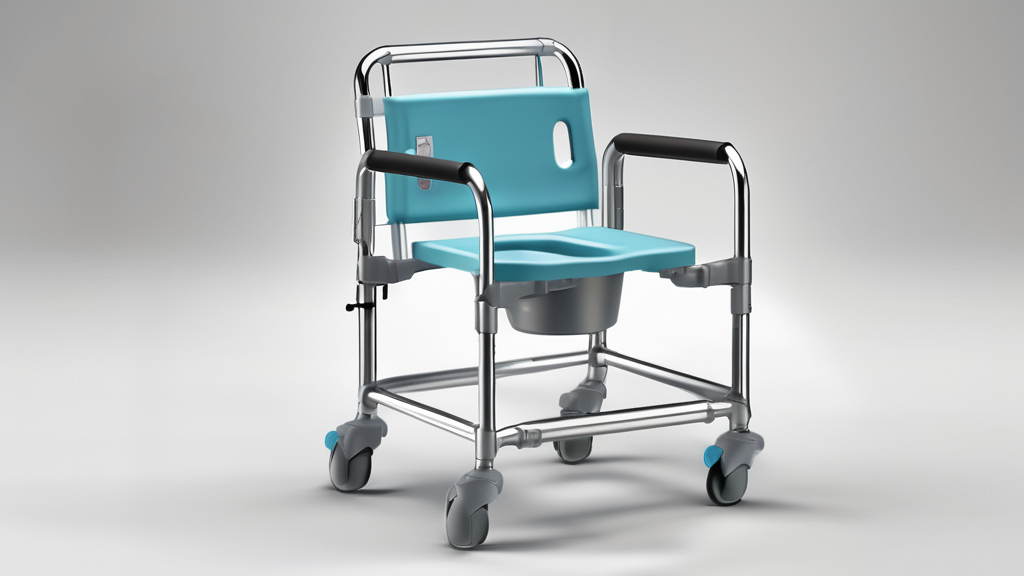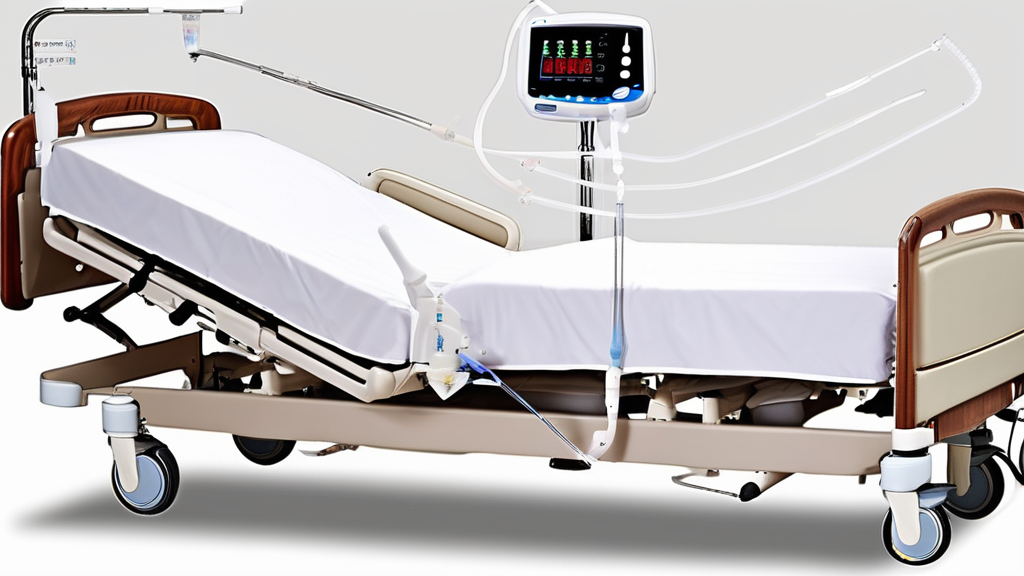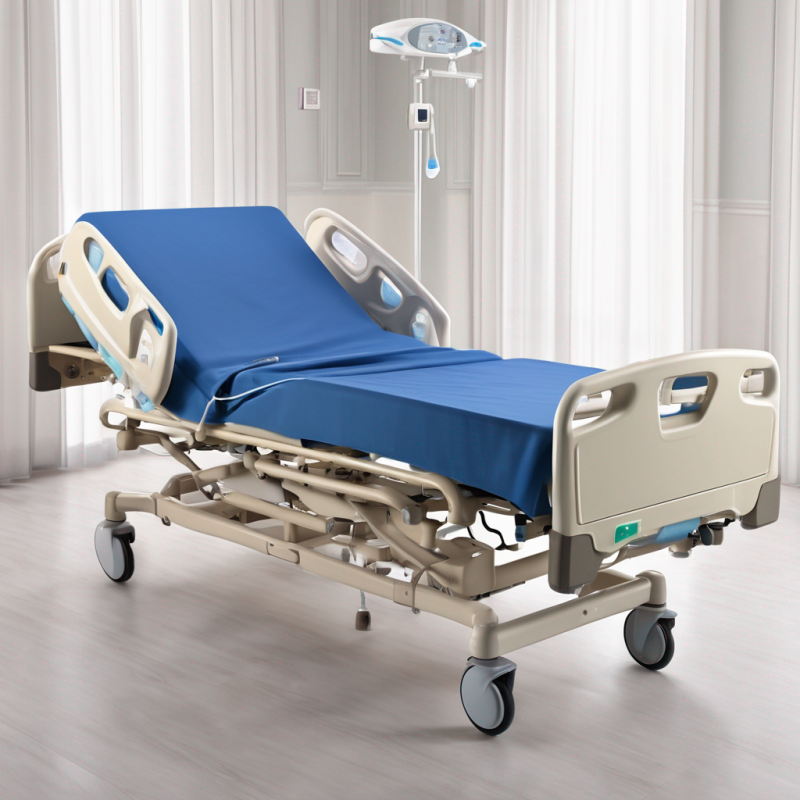Bedsores—also known as pressure ulcers—can develop quickly for patients who are bedridden, elderly, or have limited mobility. Choosing the right sleeping setup makes a world of difference. The Electric Hospital Bed for Home Use with Hi-Lo Design is specifically engineered to reduce prolonged pressure points and support daily position changes. This adjustable hospit…
Understanding Bedsores: The Basics
Bedsores are injuries to the skin and underlying tissue, typically caused by prolonged pressure on the skin. They commonly occur on bony areas of the body such as the back, heels, elbows, and tailbone. People who are immobile, like those recovering from surgery or suffering from chronic conditions like heart disease or diabetes, are particularly at risk.
As a person lies in one position for an extended period, the pressure on the skin compresses blood vessels and reduces blood flow. Without sufficient blood flow, the skin and tissue in that area start to deteriorate, leading to sores or ulcers. For individuals with limited mobility, such as those in hospitals or receiving long-term care at home, preventing bedsores becomes an essential part of the caregiving routine.
Comprehensive Prevention: Key Factors
When it comes to preventing bedsores, it’s essential to address several factors simultaneously. These include pressure relief, proper body positioning, skin care, and overall mobility. Below is a table that outlines the key factors involved in preventing bedsores and the solutions that can be implemented using the Electric Medical Bed:
| Prevention Factor | Why It Matters | Effective Solutions | Recommended Equipment |
|---|---|---|---|
| Pressure Relief | Prolonged pressure can reduce blood flow to the skin and tissue, leading to the development of bedsores. | Regular repositioning to relieve pressure, elevate certain body parts, use of pressure-relieving surfaces. | Electric Hospital Bed with Hi-Lo Design, Pressure-relieving mattresses |
| Mobility Support | Patients who are unable to move themselves need assistance to change position and avoid prolonged pressure on one area. | Electric beds with adjustable height and tilt features for easier repositioning. | Hospital Bed with Rails, Adjustable Medical Bed |
| Skin Care | Dry or irritated skin is more prone to breaking down under pressure. Proper skin care helps maintain skin integrity. | Daily cleansing, moisturizing, and applying skin barrier creams. Regularly checking skin for signs of irritation. | Comfort Bed with breathable mattress covers |
| Nutrition and Hydration | Proper nutrition supports skin health and healing. Dehydration can also contribute to skin breakdown. | Ensure adequate protein, vitamins, and hydration to promote skin healing. | Not directly related to equipment but vital for overall care |
| Temperature Control | Temperature extremes, whether too hot or cold, can exacerbate pressure on the skin. | Ensure a comfortable, consistent temperature in the bedroom. Avoid overheating the patient. | Electric Bed with temperature-controlling covers |
How the Electric Bed Plays a Role in Prevention
The key to effective pressure ulcer prevention lies in the ability to regularly change the patient’s position and reduce the time spent in one spot. The Electric Hospital Bed for Home Use allows caregivers to adjust the bed’s position with ease, whether it’s elevating the back for comfort, raising the legs to improve circulation, or tilting the body to relieve …
One of the standout features of this adjustable hospital bed is the Hi-Lo function, which adjusts both the height of the bed and the angle of the patient’s body. This feature makes it easier for caregivers to assist patients in maintaining proper body positioning and preventing pressure on vulnerable areas. For patients with heart disease, diabetes, or those recovering from surgery, the ability to adjust their bed to relieve pressure on certain areas is crucial.
Daily Care: Tips for Preventing Bedsores
While an adjustable bed like the Electric Medical Bed plays a central role in preventing bedsores, daily care is just as important. Here are some essential daily care tips that can help prevent bedsores:
- Repositioning: Regularly change the patient’s position to prevent pressure from building up in one area. Ideally, reposition the patient every two hours.
- Skin Care: Keep the skin clean and dry. Use a mild cleanser and a soft towel to dry the skin. Apply a moisturizing lotion to keep the skin supple.
- Inspect Skin Regularly: Check the patient’s skin daily for any signs of irritation or redness. If you notice any, take immediate action to relieve pressure and prevent further damage.
- Proper Nutrition: Ensure that the patient receives a balanced diet with enough protein and vitamins to support skin health and healing.
- Hydration: Proper hydration is essential for maintaining healthy skin. Make sure the patient drinks enough water throughout the day.
Other Considerations: Beyond the Bed
While the right bed is crucial for preventing bedsores, it’s also important to consider other aspects of the patient’s environment and care routine. Here are some additional considerations:
- Mattress Choices: Invest in a pressure-relieving mattress or mattress overlay to further reduce the risk of bedsores. Options include foam, gel, or air mattresses that distribute weight more evenly.
- Mobility Aids: For patients who can still move or shift their weight, using mobility aids like transfer belts or slides can help them change positions more easily.
- Temperature Control: Maintain a comfortable room temperature to avoid excessive sweating or chilling, which can affect skin integrity.
- Caregiver Education: Make sure that all caregivers are trained in proper positioning, lifting techniques, and the use of specialized equipment like the hospital bed and pressure-relieving mattresses.







